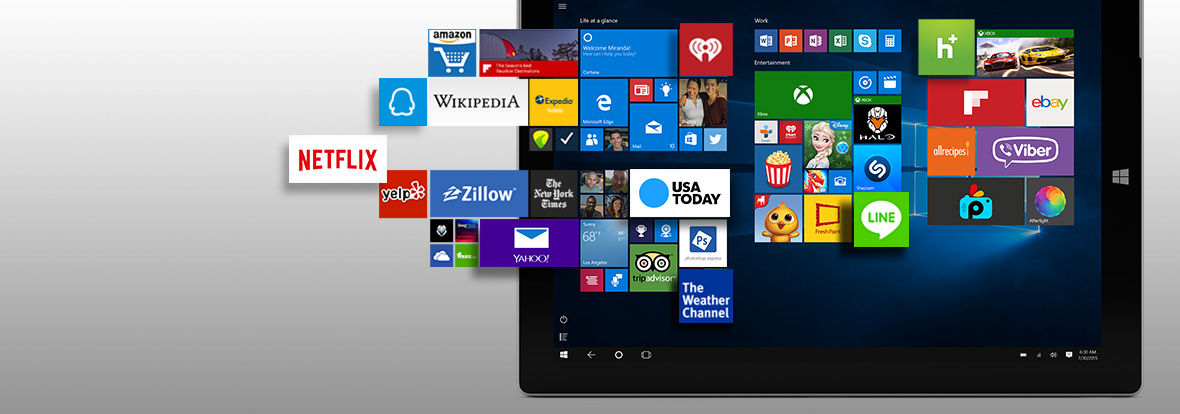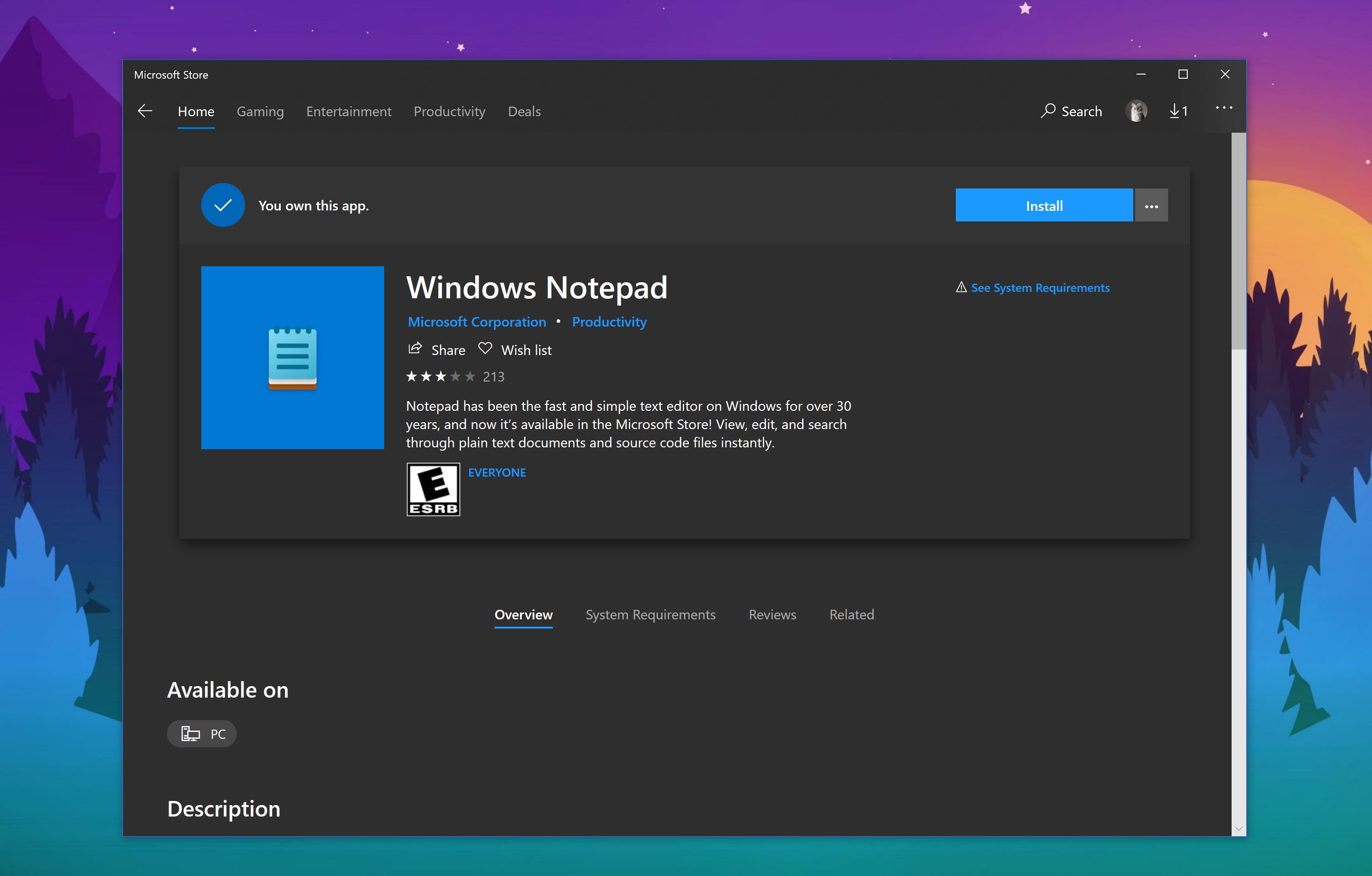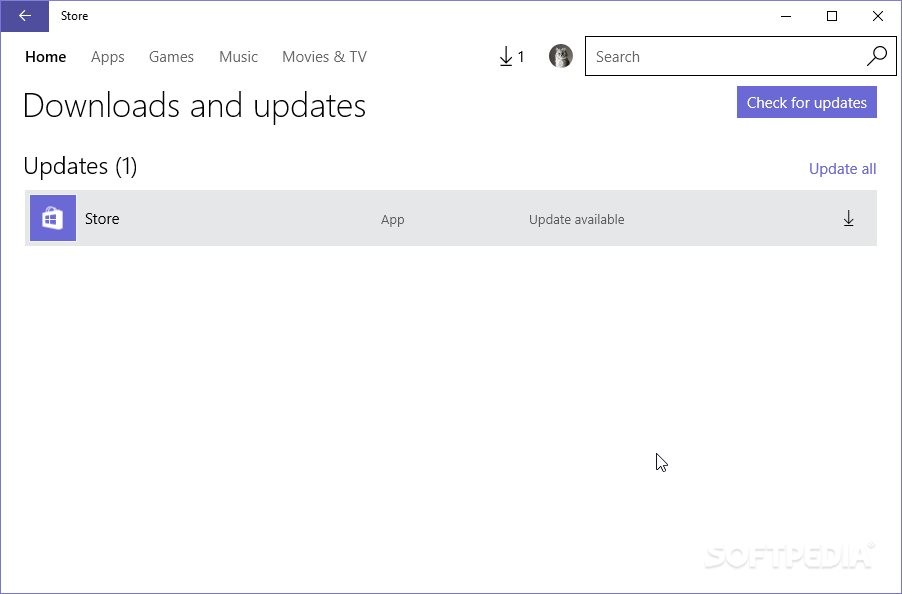In Windows 11, Microsoft Store received an updated user interface, and a new pop-up designed to handle installation links from websites. When you click on the Settings button, you can get updates, view your content library, redeem codes, change settings and payment options, access your Microsoft account, and more. One thing you might want to do off the bat is to turn off video autoplay. While you're browsing movies and games, trailers will play at the top of by default.
Settings also allow you to require a sign-in to purchase media, and you can disable auto-update for apps. Windows 10 users are seeing the shiny new Microsoft Store experience pop up after a background update to the operating system. Bleeping Computer noticed the upgrade going out late last week.
The most obvious change is a shift to the new interface, but there are under-the-hood upgrades as well. The Microsoft store can now handle a wider array of program types, from the ultra-thin Progressive Web Apps and Universal Windows Platform applications to heavier Win32 and .NET programs, among others. Future upgrades coming to both Windows 10 and Windows 11 will allow the dedicated Xbox app to download PC games to user-selected directories with better support for mods. Modern UWP apps can be installed and updated with one click thanks to the My Library feature of Microsoft Store. It saves the list of apps you have installed and purchased, so you can quickly get the required app on another device you own without searching for it again in the Store.
When you have signed in to the Store with your Microsoft account on a new device, you will be able to install the apps you already own . Microsoft Store saves the list of your devices for that purpose. This works when you are signed in with your Microsoft Account. We've redesigned the Microsoft Store on Windows 11 from the ground up, paying attention to every detail, and listening to customer feedback. The Microsoft Store is now 35% faster to open and navigate between pages than ever before. It features a new, refined design with animations to smoothly guide you from one page to the next, and subtle lighting effects to show details on spotlights.
Product detail pages have also been updated to highlight unique content from each developer, while keeping consistency across content types. And the redesigned library will help you keep track of your installed apps and updates. The report claims Microsoft will allow unpackaged Win32 applications on the Windows 10 app store, as well as software that updates itself independently. Microsoft will also allegedly allow applications to use third-party commerce platforms, a recent point of contention with Apple and Google's app stores. It sounds like developers won't have to do much more than upload existing executables, which could save on development costs.
On October 8, 2020, Microsoft announced a commitment to ten "principles" of fairness to developers in the operation of the Microsoft Store. The announcement came in the wake of a lawsuits against Apple, Inc. and Google LLC by Epic Games over alleged anticompetitive practices conducted by their own application stores. But the real reason to install it is its dramatically improved app selection.
Once installed, the apps look and work the same way as the standalone versions. Along with many new things, Microsoft added its very own app store in Windows 8, which continues its way into Windows 10, with its own very own problems, of course. Many user's experienced the missing app store issue due to corruption of files during the upgrade from the earlier versions of Windows to Windows 10 in both the Start Menu and the Tiles Mode. Microsoft has finally started rolling out Windows 11's app store to Windows 10 devices via the latest Release Preview Insider build in a phased manner.
Windows 10 Insider users who are on Release Preview build running Windows 10 version 21H2 can get the new Microsoft Store by checking for the update within the Microsoft Store. Additionally, Microsoft is also working on a new feature called "Stories" for the store. This would allow developers to create editorial content to promote their apps and games and help users discover apps that would inspire them to achieve more with their devices.
Once you start using Windows apps, you'll need to keep updates current to ensure you get the best performance and newest features. The Windows App Store will automatically check for updates to your installed apps and alert you if it finds any. If you see a number on the store's tile, it means you've got updates to download. Well, the reason why developers will be publishing unpackaged win32 apps in the Store without giving it a second thought is that the new Microsoft Store won't be an exclusive feature to Windows 11. As Microsoft announced yesterday, the new Microsoft Store will also be available for Windows 10, which is currently running on more than 1.3 billion devices.
So, developers need not worry about whether or not a significant number of users will upgrade to Windows 11. Microsoft announced Windows 11 yesterday, showcasing all the new features and changes that will be coming to the upcoming desktop OS. The new Microsoft Store is friendly to software developers that sell applications from their own Web sites.
It'll be possible to download apps from the store via a pop-up installer, which will appear when users click the app publisher's site link. For instance, the Microsoft Store on Windows no longer requires app developers to share revenue with Microsoft, when apps manage their own payment systems. All the apps and games have a presentation page to help you in your choices before downloading them. In addition, when they are in the top rankings, the rank is listed on the page, which allows you to know its current level of popularity. Reviews also simplify the search and developers can answer questions asked by users, which helps to access additional information. To facilitate your research, you also have access to articles, tips, tricks and thematic lists.
Everything is there to help you make the best choice for your needs. Microsoft is working on a new Store app for Windows 10, with a modern interface and new submission policies, according to a report from Windows Central. The new Windows 10 app store is expected to follow Microsoft's updated visual design, which is rumored to arrive in Windows 10 sometime this year.
The new app store will continue to be a Universal Windows Platform application, with monthly updates to add new features and improvements. According to a new report, Microsoft is planning to revamp the Windows 10 app store to attract more users and developers. The Microsoft Store is included with Windows 10 and 11 by default. To open, go to the Start Menu and type in Microsoft Store, or find the App under the apps in the start tab. On the Windows 10 app are tabs for Home, Gaming, Entertainment, Productivity and Deals.
Each tab takes the user to a page like a modern online store. A search bar on the top right enables the user to do a general or specific search. If the user sees an app they want, they can click on it, and select Get if it is free, and if not, they put in their payment info and select Buy. The Microsoft Store – formerly called the Windows Store -- is an online marketplace for consumers to buy and download a variety of items. The store enables users to purchase hardware such as PCs, Surface products and Xbox consoles, or download software and digital content, including apps, games, movies or TV shows.
After comparing both the apps, you cannot clearly decide the winner between Desktop Apps and UWP Apps. UWP Apps might get a little edge because of the security feature, modern design, and auto-updates. On the other hand, Desktop Apps will provide more customizations and usability for power users.
If both versions are available for your favorite apps, you can use both simultaneously and choose the one that seems more comfortable. Desktop Applications are the classic Windows OS apps that use native software for communicating with the operating system. To use desktop applications, Windows users first need to download the dedicated installer from the internet and then launch it to install the application on the system.
The software developed for Windows XP, Vista, or 7 can be purely categorized into Desktop applications. One major change that Windows 11 brought to the Windows ecosystem is the updated and redesigned app store. The Microsoft Store made its debut in June with Windows 11 Insider Preview build and since then the company is working on improving its performance and offering better support for developers.
Microsoft's app store has been struggling in recent years, but it's still a useful tool from which you can install apps and games or download music and TV shows. For various, reasons, though, you may want to disable the Microsoft Store, preventing children from downloading non-approved apps or removing bloat from your system. The Windows Store was updated again with the release of Windows 10 in 2015. This update merged Microsoft's other distribution platforms into one unified platform. This update enabled users to download apps, games, music, movies and TV shows, and books from a single location.
Next, click Manage / Inventory to view the initial app inventory. A number of the Office mobile applications will be listed and in the process of being added to the Private store. Adding apps to the Private store will take hours to appear in the Windows Store app on user's devices - not a short process. The iTunes app on the Microsoft Store is similar to the regular iTunes, but now installation updates will be handled through the Microsoft Store updater rather than through Apple. Notably, the app will only run on Windows 10 PCs with either x86 or x64 architectures. With the advent of the new education-focused Windows 10 S, developers are being encouraged to flock to the Windows Store to make their apps accessible there.
These Windows apps exist as AppX packages in the operating system. When the option to remove Windows Store apps is selected, the image creation process makes the following changes in the VM's operating system. However, when Microsoft Store was introduced, many traditional apps were unavailable, so users rarely visit it to get their applications. After the introduction of Windows 10, Microsoft has heavily invested in making its app store valuable. Today you will find many traditional desktop applications on the app store as well. With this feature embedded in Windows 10, you can fully control the apps by blocking non-Store apps or allowing Windows 10 to install apps from third-party platforms.
You can either download and install apps from anywhere by default or stop apps from unknown sources harming your PC or negatively impacting your data. One of the many refinements in Windows 11 is how it keeps you connected with relevant apps and experiences from the Microsoft Store. The new "Get Started" app helps elevate the right apps for the moment, including suggested resources from the Store.
If you like to deeply personalize the look and feel of your desktop, Windows' settings will connect you to the Microsoft Store to browse and install custom themes for your device. The main goal of the Microsoft Store is to always make it easy and convenient for users to install the best Windows software – even when you're not using the Microsoft Store app itself. Our new pop-up store can help if you're installing apps directly from a website, too.
If you're using the new Microsoft Store, you can demo the experience by clicking the badge below. Windows 10 – Owner of the WindowsApps folder – Customized You can now open the WindowsApps folder with a double click to see the individual folders for the installed store apps. Most apps use not just one folder, but several, so you should take this into account when backing up the apps. Second, developers will be able to submit raw EXE or MSI packages to the store and host apps and deploy updates via their own content delivery networks .
This change will help developers of apps such as Zoom and Firefox that have their own auto-update mechanisms as they can better control how updates are deployed to users. An updated version of Windows Store was introduced in Windows 8.1. Its home page was remodeled to display apps in focused categories with expanded details, while the ability for apps to automatically update was also added. As with other similar platforms, such as the Google Play and Mac App Store, Microsoft Store is curated, and apps must be certified for compatibility and content.
Where Is The Windows App Store In addition to the user-facing Microsoft Store client, the store has a developer portal with which developers can interact. Microsoft takes 5–15% of the sale price for apps and 30% on Xbox games. Prior to January 1, 2015, this cut was reduced to 20% after the developer's profits reached $25,000. My Library lets you check out all the apps and games you own, have installed on your system, or that are ready to install. Choose View account or Payment options to review these on the Microsoft Account site. Clicking on any of these options either takes the user to the selected application, or to a page like the Microsoft Store App where the navigation and layout are the same.
Users can select one of these options and scroll down for the specific product they want. The new Microsoft Store has some improvements and new features. It brings the catalog of Android apps and games to Windows and users can discover Android apps in the Microsoft Store. You can now run your favorite Android mobile games and apps on Windows. In the current preview version of the Microsoft Store, app version numbers can now be found under the Additional Info section of an app listing. This is only on the Windows 11 Beta and Dev Channel version, however.
Additionally, in our tests, we only see the version numbers in apps that we already have installed, and not on apps that have yet to be installed. This is a change from the public (non-beta) store version which only lists the publisher, size, languages, release date, category, and app permissions or terms for a given app in theAdditional Info section. The UWP apps are more beneficial for the touch-screen users as their user interface is touch-friendly. However, they lack some advanced features compared to traditional desktop apps.
Microsoft originally announced Windows 11's new app store in June, and since then, the company has been trying to improve the quality of its marketplace. Several servicing updates have been released as part of the Windows Insider Program and users have been testing the new Store on their devices for more than three months now. Microsoft is close to releasing Windows 11's new Microsoft Store for Windows 10 users.
The software maker has now released this new app store to Windows 10 testers in the Release Preview ring, alongside a final version of the upcoming Windows 10 November 2021 Update. Third, app developers would be able to use their own e-commerce platforms, sidestepping Microsoft's payment system. Sources told Windows Central that the company would not even take a cut of the revenue in this type of arrangement, which could be a first among such app store owners as Microsoft, Apple and Google. The design isn't all that's changing — Microsoft will allegedly relax some of the store's submission requirements. As well as a new look, Microsoft is relaxing the policies that govern the updated Store. Developers will be able to submit unpackaged Win32 apps for sale and without modification (so .exe and .msi is fine).
It will also be possible to host these apps on the developer's own content delivery network and serve updates from there, too. One further relaxation is the ability for developers to select a third-party commerce platform for their apps if they so wish. However, if they do choose Microsoft to handle in-app purchases, apparently Microsoft doesn't intend to take a cut.



























